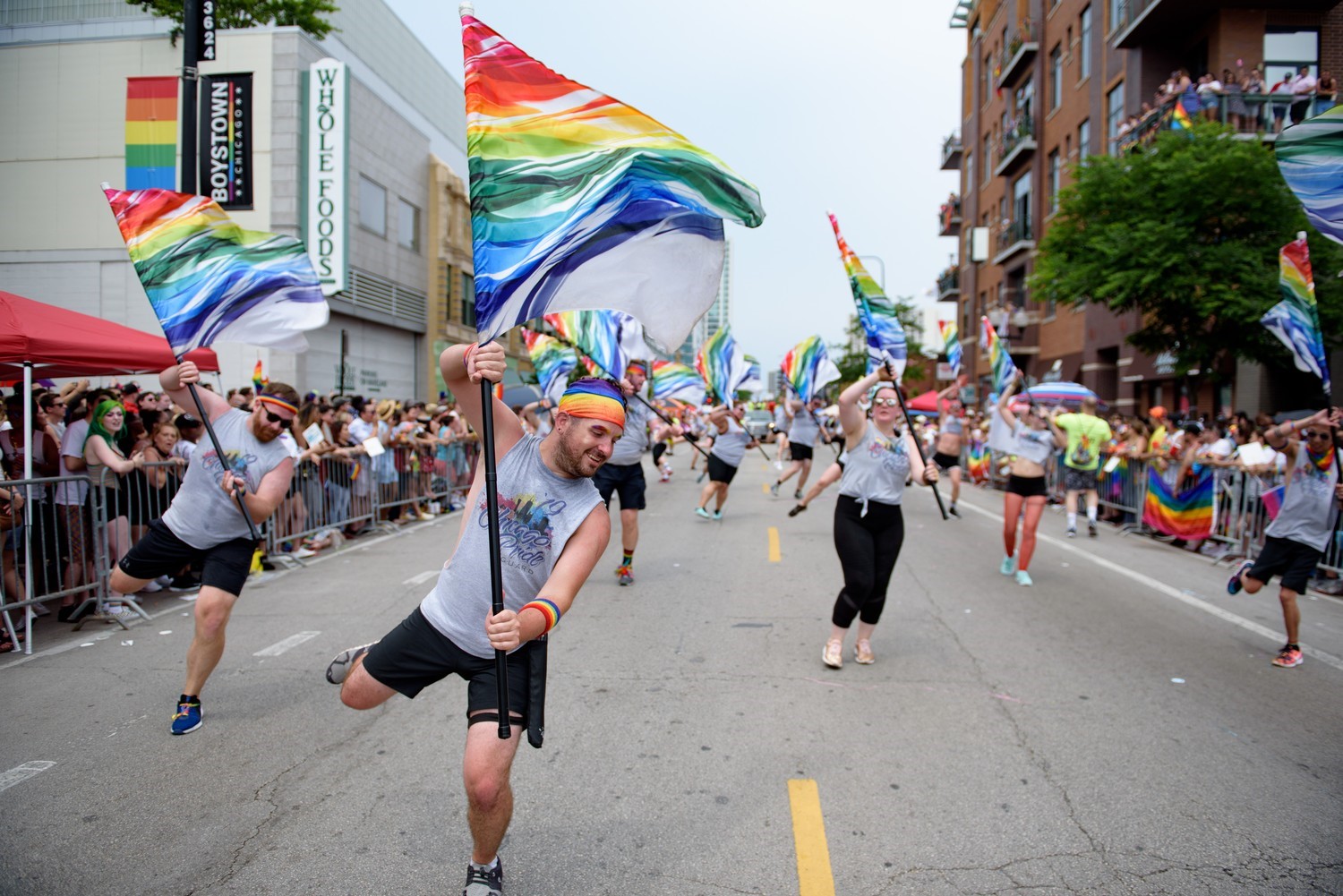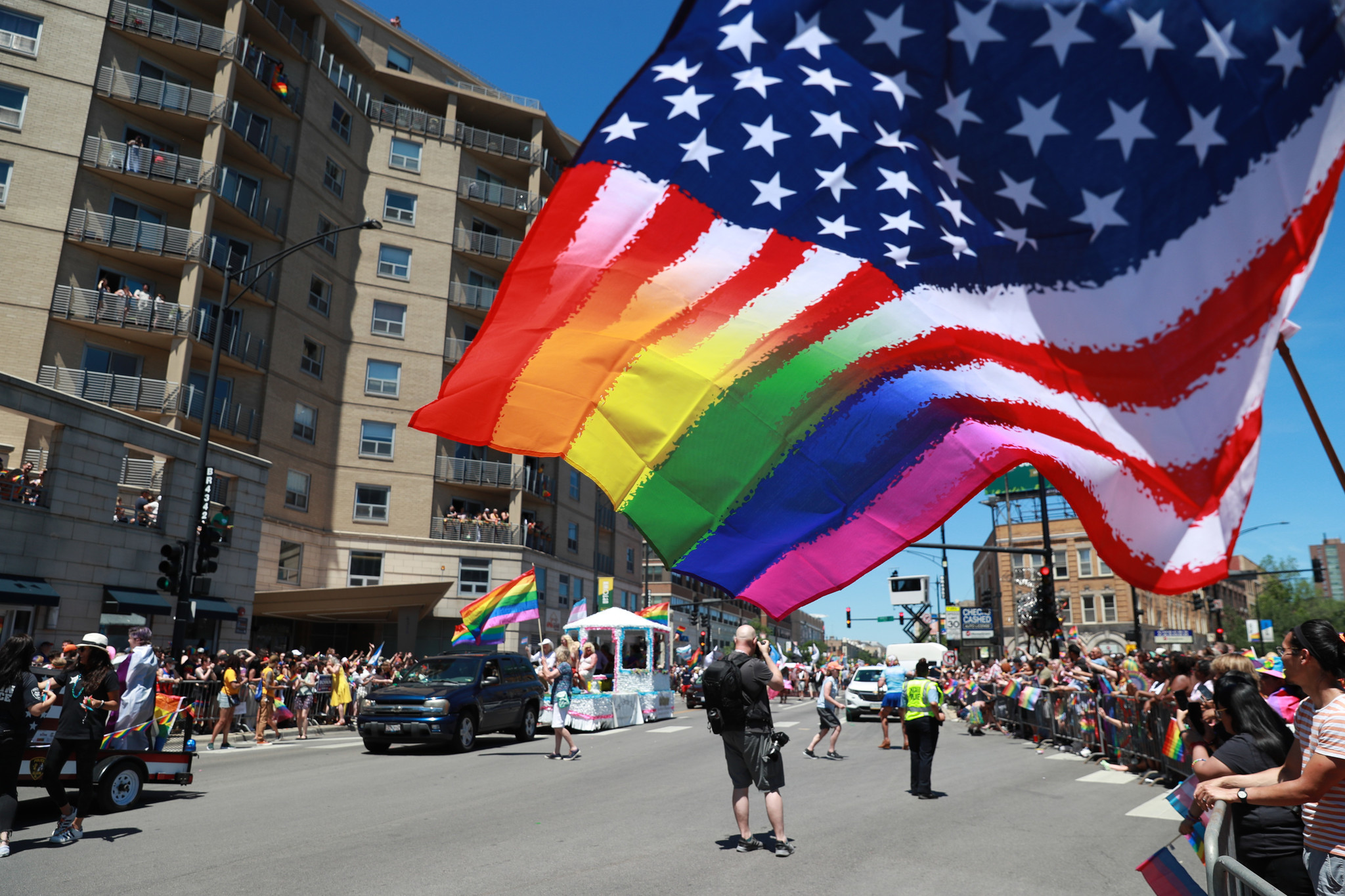Thousands of migrants have been arriving in Illinois and Chicago for more than a year and new warnings claim thousands more could be sent to the region in the coming days and months.
The influx of asylum-seekers has sparked controversy in the city and state as resources are stretched, housing is limited and residents question what's being done to help those already in Chicago.
But as the city works to come up with new ways to shelter the busloads of migrants, and the state pushes for federal helps, many are wondering - why is this happening and how did we get here?
Here's what we know:
Why are migrants coming to Chicago and Illinois?
Many migrants are from Venezuela, where a political, social and economic crisis in the past decade has pushed millions of people into poverty. At least 7.3 million have left, with many risking an often-harrowing route to the United States.
The vast majority who fled settled in neighboring countries in Latin America, but many began coming to the United States in the last three years.
Local
The buses full of migrants being sent to Illinois and Chicago, however, have largely come from Texas under the direction of Republican Gov. Greg Abbott.
How many migrants have come to Chicago so far?
Feeling out of the loop? We'll catch you up on the Chicago news you need to know. Sign up for the weekly Chicago Catch-Up newsletter here.
As of Oct. 5, more than 17,000 have arrived in the city since August 2022, according to a spokeswoman for Chicago's Office of Emergency Management and Communications.
But that number is expected to grow.
Illinois Gov. J.B. Pritzker was told this week to prepare for up to 25 buses full of migrants each day.
The governor said the warning came from Texas, which has been busing migrants to Chicago, a designated sanctuary city, for several months. Beatriz Ponce de León, the deputy mayor of immigrant, migrant and refugee rights in Chicago, also reported similar guidance, noting that the buses could potentially bring in 1,250 migrants a day.
The 25 daily buses would mark a dramatic increase compared to the totals reported by Chicago so far, more than doubling the numbers arriving in a single day.
"We were informed that basically Gov. Abbott was no longer going to respect our curfew of not sending buses between the hours of 10 p.m. and 6 a.m.," Chicago Mayor Brandon Johnson's Deputy Chief of Staff Cristina Pacione-Zayas said Thursday. "So the intention would be to increase not just the hours of reception, but then also the number of buses. He started this whole mission with like about 100 buses in the fleet and he has increased capacity to 120 buses, as well as staffing. And the goal is to get up to 150 buses. That's where we were getting the estimations that we can expect anywhere between 20 to 25 buses daily, 24-seven."
"In addition," Pacione-Zayas said, "El Paso has started to send buses. They have actually started their own contract with a busing company, separate and apart from the governor. And they also have explained to us that they would be sending one to three buses a day."
Where are the migrants staying?
Chicago, like New York and other cities, has struggled to find housing.
The city has been slowly moving people out of temporary spaces and into shelters and, in the near future, tents. Some migrants stay at Chicago's O'Hare Airport for weeks, then are moved to police stations or manage to get into the few shelters available. Within weeks, Chicago plans to roll out winterized tents, something New York has also done.
As more migrants arrive, the city's existing services have been strained. Officials have struggled to find longer-term housing solutions while saying the city needed more help from the state and federal governments.
As of 8 a.m. on Thursday, more than 10,000 residents are in city shelters, with another 3,199 migrants awaiting placement, according to Chicago's Office of Emergency Management and Communications.
The locations break down as follows:
- Total awaiting placement: 3,199
- 2,382 waiting in CPD districts, 804 at O’Hare, and 13 at Midway.
- New Arrivals Numbers:
- Chicago has received over 17,000 new arrivals since the mission began.
- 357 Buses has arrived in Chicago Since, August 31, 2022
- 256 Buses have arrived in Chicago since Jan 1, 2023
- 247 Buses have arrived in Chicago since May 12, 2023
- 14 Buses arrived yesterday today, October 4, 2023
- 11+ Buses expected today, October 5, 2023
What's being done about it?
Johnson told reporters on Wednesday that he would travel to the southern border as part of a Chicago delegation, though offered no details on when such a trip would take place.
Johnson added that a team with the U.S. Department of Homeland Security is currently in Chicago, assessing the severity of the ongoing crisis.
The White House confirmed it has a DHS "team comprised of experts" in Chicago to assess the situation and "identify ways that the City and the federal government can improve efficiencies and maximize resources."
On Thursday, it was revealed that the Biden administration will resume deporting migrants to Venezuela as increasing numbers arrive to the U.S-Mexico border.
The process is expected to begin shortly, said two U.S. officials, though they did not provide specific details on when the flights would begin taking off. The officials were not authorized to disclose details of the government’s plan and spoke to the AP on condition of anonymity.
Deportation flights had been paused in part because the U.S. has few diplomatic relations with the nation. U.S. officials would not say how Venezuela agreed to accept back their citizens except to say that, like other countries around the world, the U.S. has long encouraged Venezuela to take back its nationals.
The resumption of deportation comes not long after the administration increased protected status for Venezuelans who arrive to the U.S., so if someone arrived to the U.S. before July 31 of this year, but not after, they'd be eligible for protections. The decision reflects the larger strategy by President Joe Biden to not only provide expanded legal pathways for people arriving, but also to crack down on those who illegally cross into the country from Mexico.
It’s the latest effort to deal with swelling numbers of migrants as the administration comes under increasing pressure from Republicans and mayors from the president’s own party to do more to slow arrivals. U.S. officials were in Mexico Thursday to discuss the issue.
The situation had already prompted Pritzker to send a letter to Biden this week.
"In the 13 months since the first bus of asylum seekers arrived in Illinois from the border, our state has undertaken an unprecedented humanitarian response to the arrival of now over 15,000 people," Pritzker wrote Monday. "Governors and mayors from border states have shipped people to our state like cargo in a dehumanizing attempt to score political points. The people of Illinois are kind and generous. We believe in the fundamental right of every human, especially those facing persecution, to find refuge and live with dignity in this great country of ours. But as the numbers being transported to Chicago are accelerating, the humanitarian crisis is overwhelming our ability to provide aid to the refugee population. Unfortunately, the welcome and aid Illinois has been providing to these asylum seekers has not been matched with support by the federal government. Most critically, the federal government's lack of intervention and coordination at the border has created an untenable situation for Illinois."
Pritzker noted that the state has dedicated more the $330 million to humanitarian aid, an amount that is increasing each day.
"That’s a massive amount of money for a state still overcoming the health and economic effects of COVID-19. Add to that the over $100 million the city of Chicago contributed. Though we have found temporary housing in existing buildings for a majority of the refugees, we are challenged to find additional housing for the continuous flow of people who keep coming and are now forced to sleep in police stations and on sidewalks," Pritzker said. "This situation is untenable and requires your immediate help beyond the coming work authorizations for some of the asylum seekers. There is much more that can and must be done on a federal level to address a national humanitarian crisis that is currently being shouldered by state and local governments without support."
In response, a White House spokesperson said the president "has repeatedly called on Congress to pass comprehensive immigration reform since his first day in office" and touted the administration's efforts to accelerate the issuance of work permits and grant funding for communities supporting migrants.
"Meanwhile, House Republicans continue to block the reform the immigration system needs and the $4 billion we requested to address the immediate needs of DHS to safely and humanely manage the Southwest Border and support communities across the country," the spokesperson said in a statement. "We will continue to work closely with Illinois and states and cities across the country."
What are residents saying?
Tensions over Chicago's migrant crisis continue to rise as 22 more buses of asylum-seeking migrants arrived in the city on Wednesday.
The housing of migrants has sparked controversy in a number of Chicago neighborhoods.
South Shore residents have re-filed a lawsuit that aims to stop the city from housing asylum-seekers in public buildings such as police stations and schools.
The lawsuit, filed Sept. 26 by Natasha Dunn, Jimmy Darnell Jones and other residents, seeks wider relief in addition to their initial case filed in May which sought to stop the former South Shore High School from being turned into a shelter for migrants. It names the city of Chicago, Johnson and Chicago Public Schools as defendants.
The residents voluntarily dropped the first lawsuit after learning the former high school wouldn’t be used to house asylum-seekers. But after hearing that thousands of migrants would continue to be sent to Chicago, the South Shore residents filed a broader lawsuit in Cook County circuit court, said Frank Avila, an attorney representing the residents.
At a community meeting on Monday, some Pilsen residents welcomed the opening of a new temporary shelter for asylum-seekers in the neighborhood, but others wondered why the city wasn’t first helping homeowners in the area lower their property taxes. The warehouse, at 2241 S. Halsted, was expected to start receiving migrants as soon as Tuesday.
About 400 migrants, comprised of families with children, will be housed in the neighborhood’s first city-run shelter during the initial phase, according to a fact sheet given out to meeting attendees. Up to 1,000 migrants could be housed during a second phase, city officials said.
“What we are doing here is saving lives,” local Ald. Byron Sigcho-Lopez (25th) told the hundreds gathered at Benito Juarez Community Academy’s auditorium about the new shelter, pointing out that many migrants are forced to stay in cramped conditions at police stations across the city.
Many residents of the neighborhood — which has a sizable immigrant population — sympathized with the plight of the recent arrivals, but they wondered why immigrants who have been here for years aren’t receiving the same levels of help.
In the Austin neighborhood, a Tuesday community meeting was planned ahead of a shelter the city is set to open in Amundsen Park.



